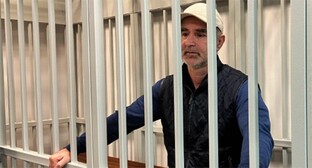22 May 2003, 03:57
The Avars
They call themselves maarulal, the indigene population of Dagestan. According to the census of 1989 their population in the USSR was 544 thousand people, including the closely related Ando-Tsez peoples and the Archins; part of them lives in the north of Azerbaijan SSR (Belokansk and Zakatalsk districts). They belong to the Balkan-Caucasus race of the big European race. They speak the Avar language of the Nakh-Dagestan group of the North Caucasus branch. Dialects: northern (Salatav and Khunzakh dialects), southern (Anchukh, Gidatl, Batlukh dialects), intermediate (Keleb, Untib dialects). Russian language is also wide-spread. Written language is based on Russian alphabet. Religious Avars are Moslems-sunnits.
The ancestors of the Avars are known to have populated their modern territory since the first centuries A.D. In the 15th century attempts were made to make written Avar language basing on Arab alphabet. When Dagestan joined Russia in the 19th century, the capitalist relations started to influence the Avars. The national consolidation of the Avars was speeded up by the formation of the Dagestan Autonomous SSR (1921).
Traditional occupations - cattle-breeding (mainly the distant-pasture sheep-breeding), agriculture and horticulture (in the valley districts). Trades: weaving, fulling, making felt, carpets, copper dishes, wooden utensils, leather processing, jewelry and blacksmith?s work. People used to perform their trades in the other districts of the Caucasus.
Many traditional villages were located on the mountain slopes and looked like the fortresses consisting of adjoining houses with military towers. The stone houses with flat rooms usually were two-storied (household rooms on the first floor, living rooms on the second floor), sometimes many-storied, often the roof of one house was used as the yard of the other house. Many houses had a bearing center, a post, often decorated with carving.
Traditional male costume is of a general Dagestan type: trousers, shirt, beshmet, cherkeska, sheepskin coats and hats (papakhas), leather and felt footwear. Main elements of the female costume: dress-shirt, trousers, head gear (chukhta) of different shapes (mainly sack-shaped in the end of the 19th century), shawls of different colors, sheepskin coats, leather, felt and knitted footwear. In some central and southern districts they also wore short and long single-back clothes. The costume was decorated with embroidery, silver, was adorned with silver decorations.
Traditional food - farinaceous foods, meat dishes with garlic and dairy products.
Families are usually not big.
They have advanced folklore (epic and lyrical stories, songs, fairy-tales, proverbs and sayings).




